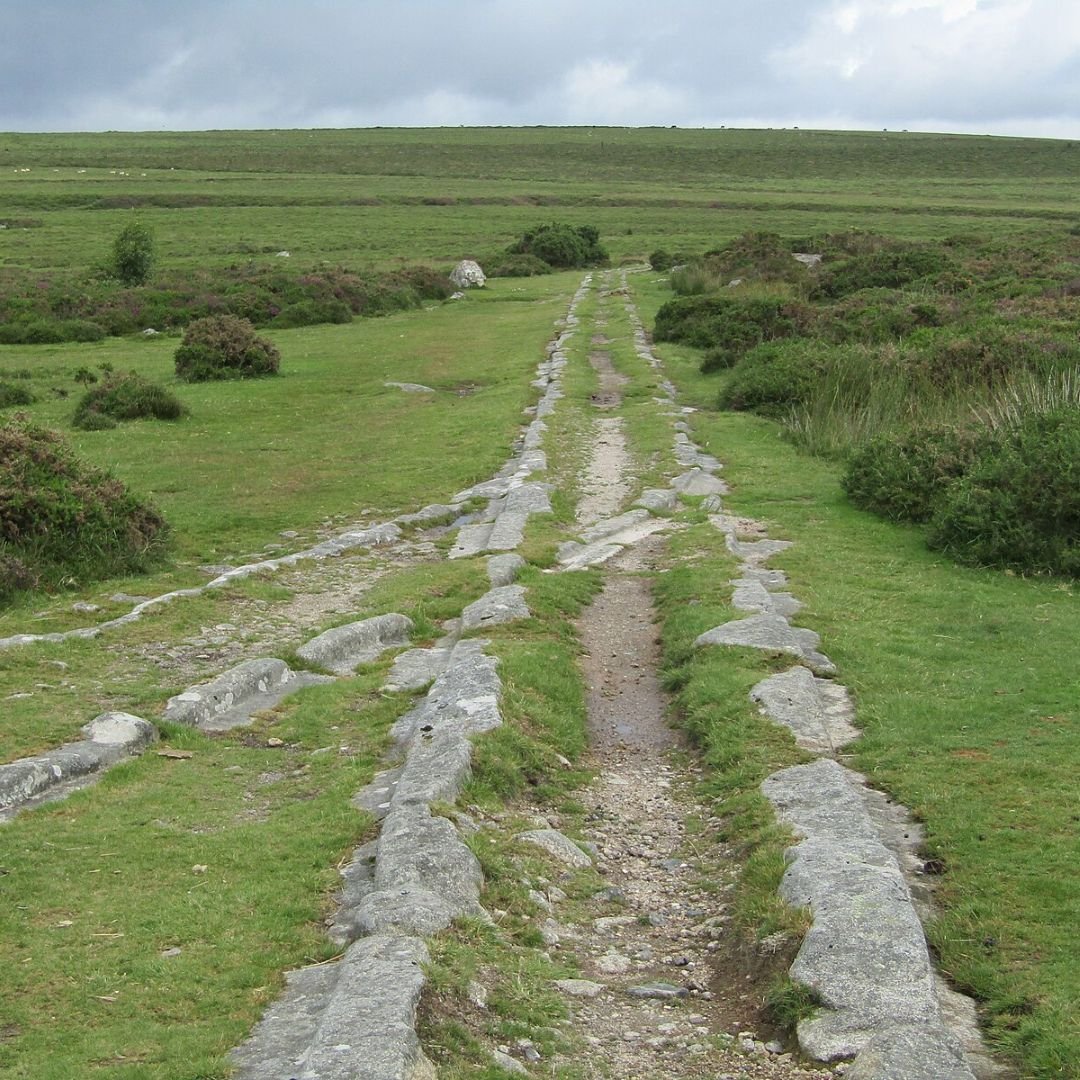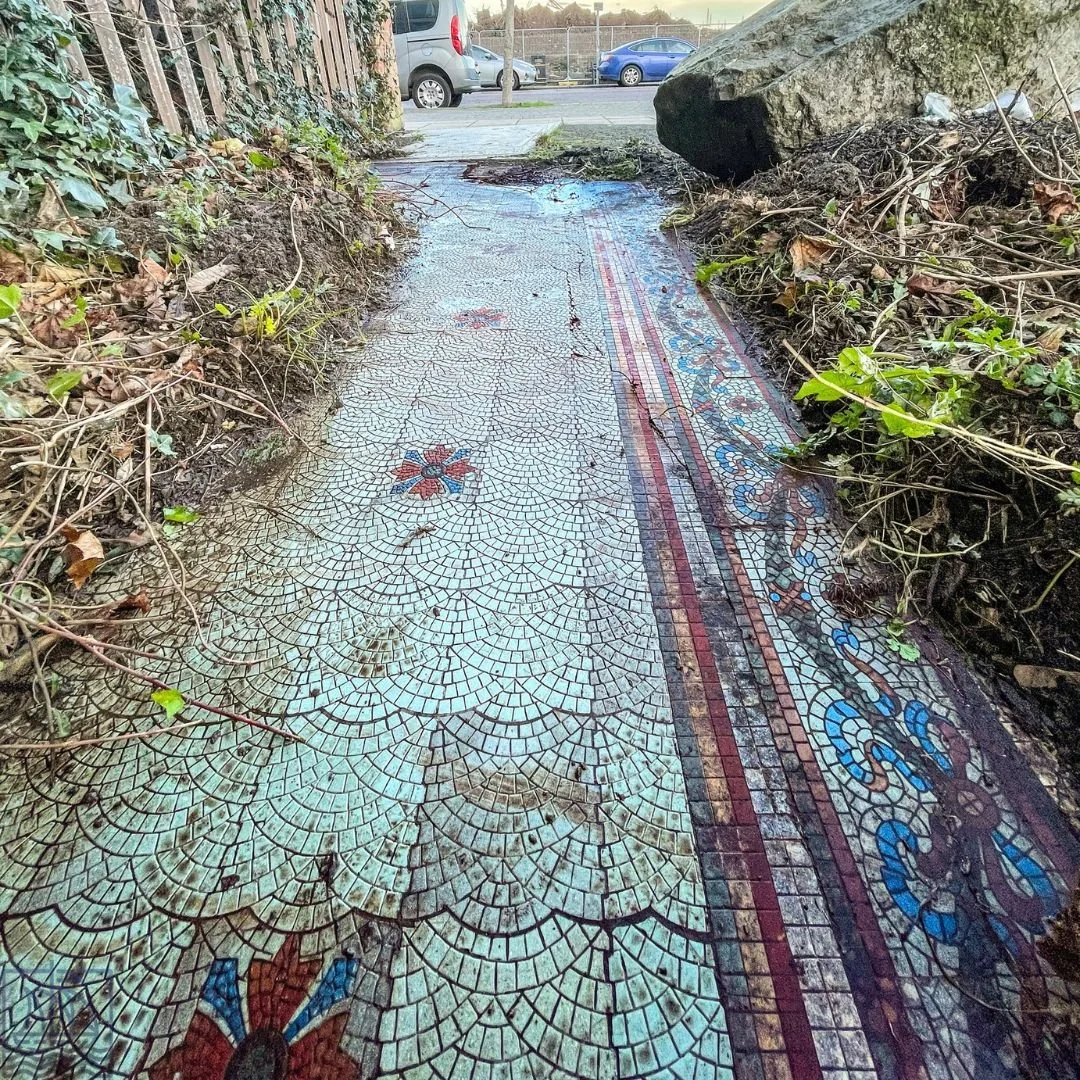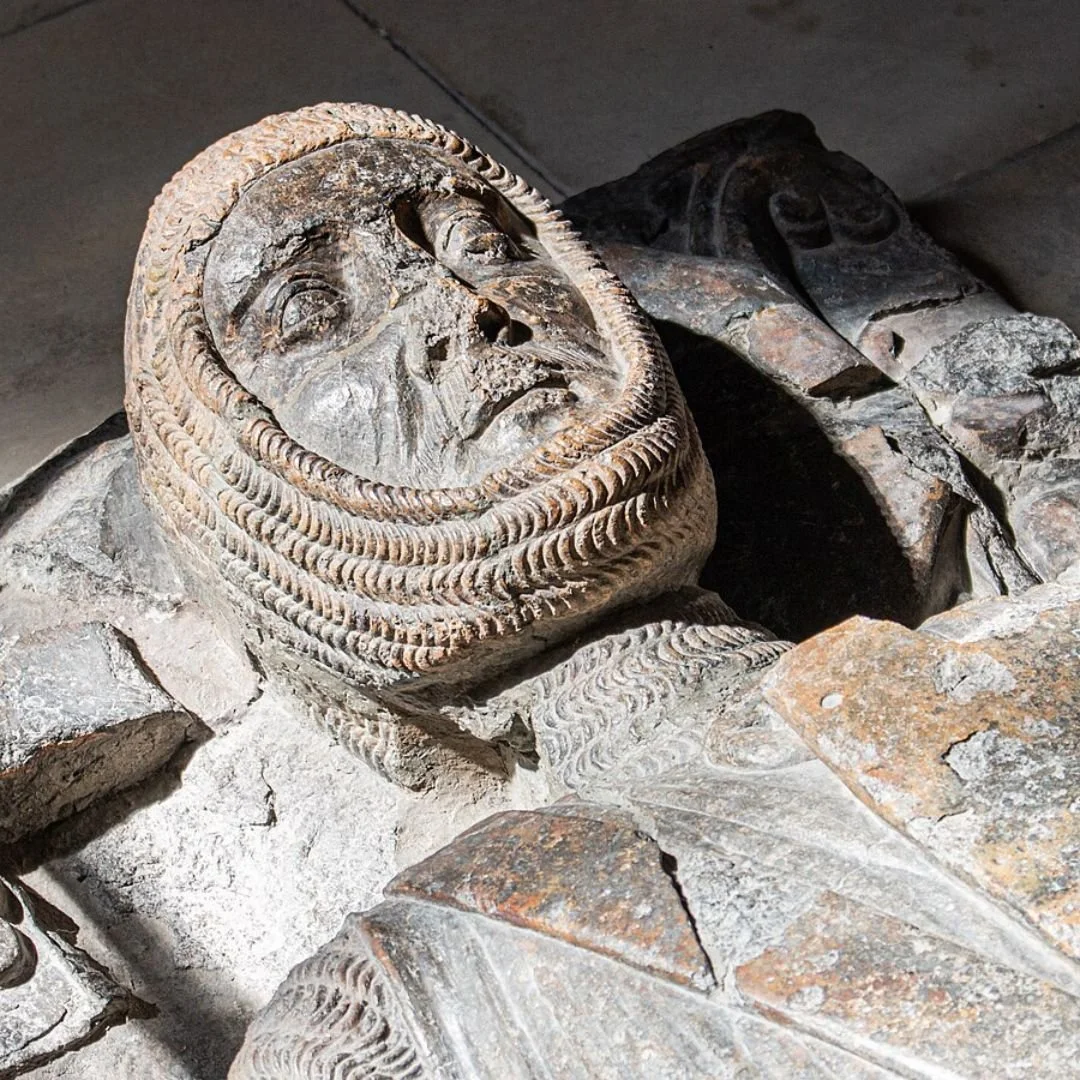Engineering Genius of the Haytor Tramway
The Haytor Tramway (a Scheduled Monument) was an engineering masterpiece for its time, and a remarkable feat of industrial ingenuity.
Operational between 1820 and 1858, the tramway was a unique and innovative industrial line, built of granite rather than iron, to transport granite from the Haytor Down quarries in Devon to the Stover Canal for onward shipment.
This line was instrumental in supplying high-quality granite for some of Britain's most significant construction projects, most notably the new London Bridge.
Remarkably, large parts of the original tack can still be still today.
Dartmoor has long been a source of excellent granite, and the early 19th century saw a surge in demand for the material, particularly in the rapidly expanding capital of London.
The Haytor Down quarries, yielding a fine, durable stone were ideally situated to meet this need.
However, the quarries’ isolated position on the high moorland, approximately 1,200 feet above sea level, presented a major logistical challenge for transporting the massive blocks of stone to market.
The solution lay in connecting the quarries to the water network.
George Templer (1781–1843), the owner of the Stover Estate and the granite quarries, decided to build a tramway linking Haytor Down to the southern end of the Stover Canal near Teigngrace.
The canal, which Templer's father had built, provided a direct waterway connection to the River Teign estuary and the sea, from where the granite could be shipped nationwide.
The standout feature of the Haytor Tramway was its novel construction method.
At the time of its design, iron was an expensive commodity, especially in a remote location like Dartmoor.
Conveniently, the very material being transported, granite, was abundant and cheap to procure from the adjacent quarries.
Templer chose to build the track completely out of granite. The line, which stretched approximately 9 to 10 miles (about 15 km), was laid using dressed granite blocks, known as 'setts,' that served as the rails.
The track was formed of L-shaped granite blocks, or 'rails,' typically about 3 feet long.
These blocks were laid end-to-end and rested on small, rough granite 'sleepers,' or foundation stones, set into the moorland.
The L-shape created a vertical 'upstand' or flange on the inner side of the track.
Unlike modern railways where the flange is part of the wheel, the Haytor Tramway used unflanged wagon wheels, a simple, robust design. The granite upstand kept the wagons from running off the track.
The wagons themselves were simple, robust wooden vehicles, and the entire system was horse-drawn.
The granite track provided a smoother, lower-resistance surface than a typical rough road, allowing a single horse to pull multiple fully-laden wagons.
This innovative, if rudimentary, design eliminated the need for costly iron and maximized the use of local materials.
The resulting tramway was virtually maintenance-free and remarkably durable, surviving largely intact on the moorland long after its closure.
The route of the tramway was a marvel of surveying and engineering, traversing difficult moorland terrain with steep gradients and sharp curves, dropping approximately 1,200 feet over its course.
The tramway was not continuous in the modern sense.
It was designed primarily using a series of inclines, or gravity-assisted sections, followed by stretches of level ground where the horses operated.
Near the quarries, the track involved several branch lines feeding the main tramway. Due to the high elevation, loaded wagons could often be controlled down the inclines using gravity and brakes alone.
Key features included the dramatic Holwell Inclines, a series of steep drops that allowed the tramway to descend into the lower valleys efficiently.
The steepest sections used counterbalanced systems or rope-haulage, though horses were still used for the level sections between the inclines.
The operational period of the Haytor Tramway, though relatively short (just 38 years), was highly significant for the South Devon economy and for national infrastructure.
The reliable transport link facilitated the mass export of granite, securing contracts for huge public works.
The most famous use of Haytor granite transported via the tramway was for the construction of the new London Bridge (designed by John Rennie and opened in 1831).
Additionally, the stone was used for projects such as the British Museum and the National Gallery, cementing its contribution to the architectural face of Britain's capital.
By the late 1840s and 1850s, the economic climate shifted.
The widespread adoption of iron and the arrival of conventional, steam-powered railways in the South Devon area offered cheaper and faster alternatives for heavy transport.
Furthermore, the rising cost of working the Haytor quarries, coupled with the increasing availability of granite from other sources, led to a drop in demand.
The line eventually closed in 1858. Unlike many early industrial lines that were dismantled for their iron, the Haytor Tramway's granite track was left in place.
Today, the Haytor Tramway is a scheduled ancient monument and a popular feature for walkers on Dartmoor National Park.
If you enjoyed this blog post, please follow Exploring GB on Facebook for daily travel content and inspiration.
Don’t forget to check out our latest blog posts below!
Thank you for visiting Exploring GB.


















